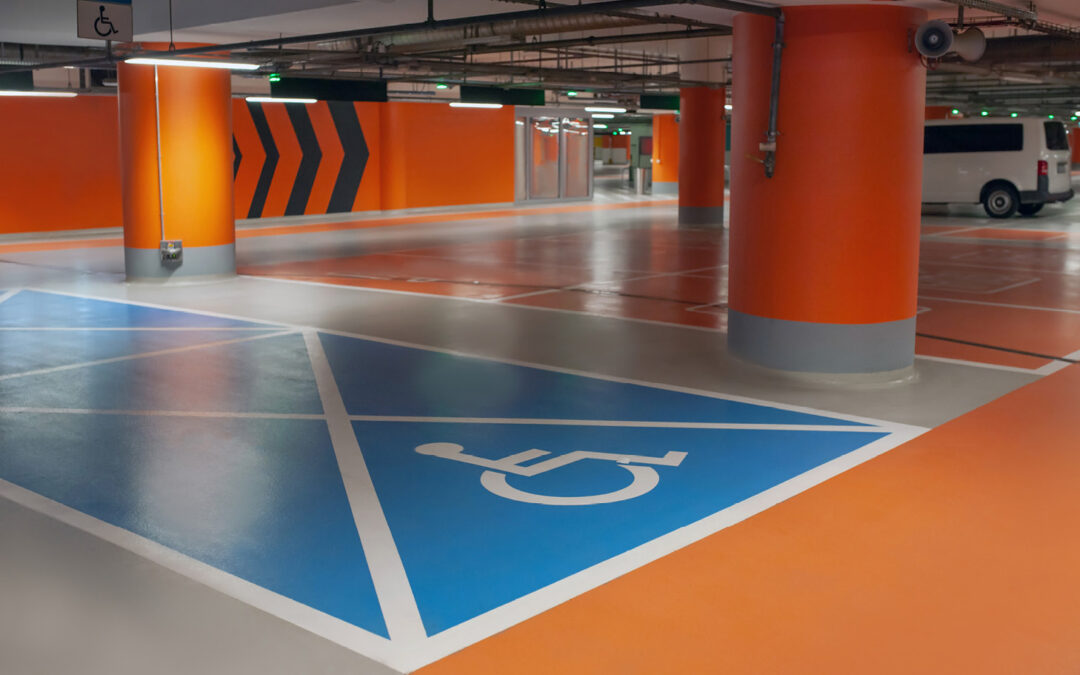The rules on disabled car parking bays are clear. If you’re responsible for a private car park, you have a legal obligation to provide reasonable adjustments for disabled motorists so they can use your car park safely.
This article outlines your responsibilities and the rules on disabled bay car park marking.
Why does disabled parking matter?
Accessible parking bays are essential for disabled motorists who need extra room to safely get into and out of their vehicles.
Wheelchair users who use a car transfer aid, or have a ramp fitted, need more space to the side and back of their vehicle. The average car parking space just isn’t big enough to accommodate these mobility aids.
Without disabled car parking bays, a significant portion of the population would be unable to access the same facilities, services and goods as everyone else.
Do private car parks have to provide disabled spaces?
The Equality Act 2010 is clear on the rights of disabled motorists in the UK. Reasonable adjustments must be made to car parks to ensure accessibility for disabled motorists.
This includes providing designated disabled parking bays that are easy to identify at a glance. The use and size of your car park determines how many disabled parking spaces you need to provide.
Every disabled employee should have their own accessible parking space. Additionally, you should designate a percentage of the total number of bays as disabled car parking spaces.
The Department for Transport offers these guidelines.
- In car parks associated with newly built employment premises, 5% of the overall capacity should be designated disabled parking bays.
- In car parks for shopping areas, leisure or recreational facilities, 6% of the total capacity should be given to accessible bays.
Disabled parking space dimensions (UK)
Disabled parking spaces are wider and longer than the average parking space.
Bays should be at least 2400mm wide by 4800mm long.
In addition, there must be an ‘access zone’ of 1200mm around each side of the bay for disabled motorists to get into and out of their vehicles safely.
Space at the back of the vehicle is just as important as the side for rear-access wheelchair ramps and hoists.
Disabled parking bay markings
Accessible bays in your car park should be easy to identify at a glance. Both markings on the car park’s surface and signage at the driver’s eye level are required.
The wheelchair symbol should be painted or applied to the road’s surface in every designated bay. (This yellow symbol is usually around 1.4 metres long.)
For on-street parking, it’s sometimes more appropriate to use the word DISABLED with or without the wheelchair symbol.
Thermoplastic paint is typically used for this type of car park marking. The paint is applied using heat, and as it melts, it forms a durable bond with the surface of the road.
Reflective and hard-wearing, thermoplastic paint is ideal for busy car parks and stretches of highway.
Rules on disabled car parking bays
The law says disabled motorists should be able to access your car park. That means having the correct number of disabled parking bays with the proper car park markings and signage in place.
Many people and organisations are involved in setting the rules on disabled parking bays, from government agencies to consumer groups. Making sense of it all can feel like hard work, but that’s where we come in.
We’ve been working in the industry for a long time and know a thing or two about these rules. For help and advice, speak to the friendly team at Clean and Retrieve.
